 W
WAcromyrmex lobicornis is a species of leaf-cutter ant, a New World ant of the subfamily Myrmicinae of the genus Acromyrmex. This species is from one of the two genera of advanced attines within the tribe Attini.
 W
WAmblypsilopus is a genus of flies in the family Dolichopodidae. It is a large genus, with about 300 species recorded. However, it is possibly polyphyletic.
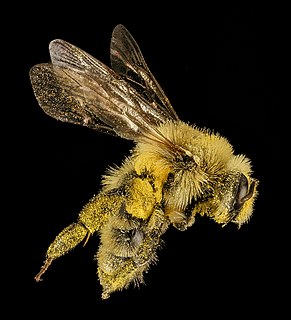 W
WThe hairy-belted miner bee is a species of miner bee in the family Andrenidae. Another common name for this species is the hairy-banded andrena. It is found in North America.
Bombus brachycephalus is a species of bumblebee native to Mexico and Central America. This bee occurs in mountain and highland regions, where it lives in various types of forests. It is active year-round in many areas.
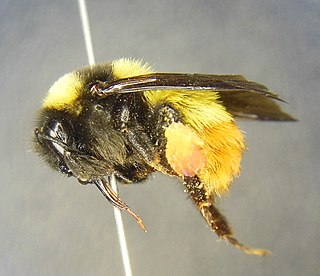 W
WBombus haueri is a species of bumblebee. It is endemic to Mexico.
 W
WBrachynemurus sackeni is a species of antlion in the family Myrmeleontidae. It is found in Central America and North America.
 W
WColletes hyalinus, the hyaline cellophane bee, is a species of hymenopteran in the family Colletidae. It is found in North America.
 W
WContarinia nasturtii, the swede midge, is a small fly, the larvae of which infest brassica plants, causing twisting and distortion of the leaf stems and foliage including death of the growing point in seedlings, or damage to developing flower heads. It is native to Europe and Turkey, and has been introduced into North America where it is regarded as an invasive species.
 W
WCopiphora rhinoceros, the rhinoceros katydid, is a katydid found in Central America. It belongs to a group known as the conehead katydids and can be identified by a horn-like projection on the center of its head. The horn is used to ward off attacks from hungry bats. Unlike most katydids, which are herbivores, the rhinoceros katydid is an omnivore, feeding on fruit, seeds, invertebrates and small lizards. Its lifespan is one to two years.
 W
WCryptochetum iceryae, the cottony cushion scale parasite, is a species of scale parasite fly in the family Cryptochetidae. Originating in Australia, it was deliberately introduced to California in the 1880s in an attempt to control cottony cushion scale, and has also been introduced to Israel and South America. In 2019, the species was discovered in the United Kingdom for the first time, having been identified in the wildlife garden at the Natural History Museum.
 W
WDicranota claripennis is a species of fly in the family Limoniidae. It is found in the Palearctic.
 W
WEmpicoris rubromaculatus, the thread bug, is a species of thread-legged bug in the family Reduviidae. It is found in North America and Oceania.
 W
WEuchariomyia dives is a species of fly in the subfamily Bombyliinae.
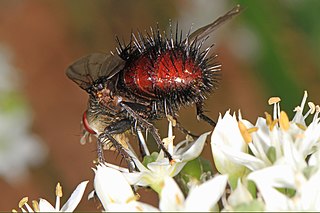 W
WJuriniopsis adusta is a species of bristle fly in the family Tachinidae. It is found in North America.
 W
WLaccotrephes pfeiferiae is a species of water scorpion belonging to the family Nepidae. It was until 1999 considered synonym of Laccotrephes robustus; records of L. robustus outside the Philippines refer to this species.
 W
WMegachile inermis is a species of bee in the family Megachilidae. It was described by Provancher in 1888.
 W
WObeza floridana is a species of chalcid wasp in the family Eucharitidae.
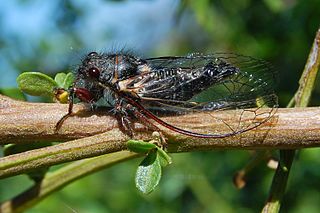 W
WPlatypedia minor is a species of cicada in the family Cicadidae. It is found in Central America and North America.
 W
WPolistes balder is a species of paper wasp in the Polistes genus from Australia to Christmas Island.
 W
WSierolomorpha canadensis is a species of sierolomorphid wasp in the family Sierolomorphidae.
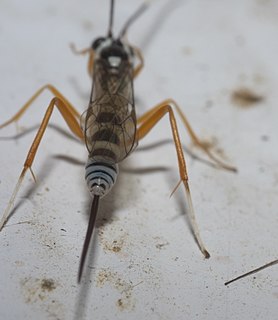 W
WSphelodon phoxopteridis is a species of parasitoid wasp in the family Ichneumonidae.
 W
WStictopleurus subtomentosus is a species of scentless plant bugs belonging to the family Rhopalidae, subfamily Rhopalinae.
 W
WTapinoma atriceps is a species of ant in the genus Tapinoma. Described by Emery in 1888, the species is endemic to Brazil and Paraguay.
 W
WTosena depicta is a cicada species from Southeast Asia